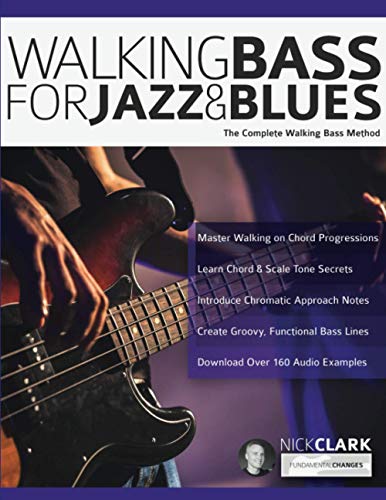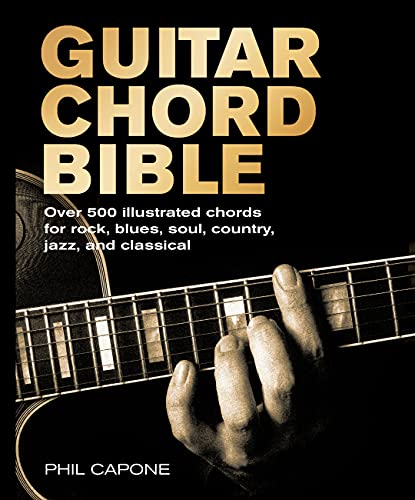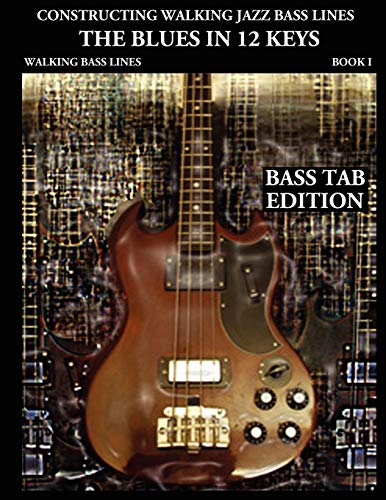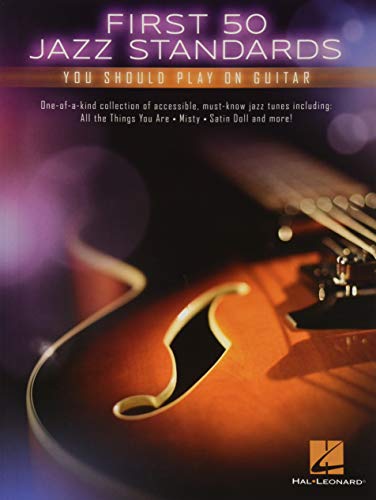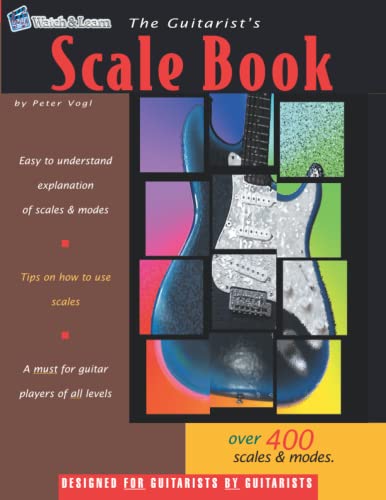Best Electric Guitar For Blues And Jazz (2024 Update)
When looking to purchase the best electric guitar for playing blues and jazz, there are several key factors aspiring musicians need to consider to find the optimal instrument. The first step is determining what tonewoods produce the warm, resonant tones essential for nailing those soulful solos. Mahogany and maple are classic options preferred by many blues and jazz artists. The guitar’s electronics also play a significant role in shaping the overall sound. Single-coil pickups tend to offer a brighter, crisper tone perfect for cutting through a mix, while humbuckers provide a thicker, richer sound ideal for blues.
Beyond tonewoods and electronics, guitarists must also evaluate neck profiles, fretboards, bridges, and numerous other specifications that factor into playability, comfort, and responsiveness. An instrument with a fast neck and low action facilitates smooth lead playing and quick runs. Does body shape and weight matter when hopping between long gigs? How do some hardware and electronic features boost versatility for those who dabble in other genres too? Asking these questions helps narrow the list down to a few contenders.
Of course, visual aesthetics contribute to the appeal of a great guitar as well. At the end of the day, finding the perfect blues-jazz electric combines exemplary craftsmanship with the ineffable quality of stirring that inner bluesman. With so many excellent options available, doing thorough research is key to zeroing in on an electric guitar that becomes an inspiring lifetime companion.
10 Best Electric Guitar For Blues And Jazz
| # | Product Image | Product Name | Product Notes | Check Price |
|---|---|---|---|---|
|
1
|
This product is ideal for learning how to play walking bass for jazz and blues music.
|
|
||
|
2
|
The product is ideal for musicians who want a vintage-style guitar at an affordable price.
|
|
||
|
3
|
Ideal for musicians seeking vintage tones and looks at an affordable price point.
|
|
||
|
4
|
Ideal for guitar players looking for a classic sound and feel from the 1960s era.
|
|
||
|
5
|
Ideal for musicians looking to expand their chord knowledge across various music genres.
|
|
||
|
6
|
The electric guitar is ideal for musicians looking for a semi-hollow body design with a bone nut and vibrant color options.
|
|
||
|
7
|
This product is ideal for bass players who want to learn how to construct walking bass lines in the blues genre.
|
|
||
|
8
|
This product is ideal for musicians who want a versatile and stylish electric guitar with a semi-hollow body and P90 pickups.
|
|
||
|
9
|
Ideal for guitarists wanting to learn and play a variety of essential jazz standards.
|
|
||
|
10
|
The product is ideal for guitarists looking to expand their knowledge and improve their playing skills with over 400 scales and modes.
|
|
1. Squier Classic Vibe 60s
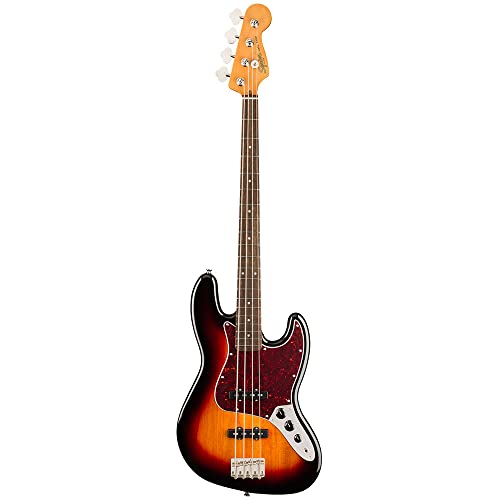
The Fender Player Jazz Bass is an exceptional instrument that has been 100% designed by Fender. It is inspired by the iconic 1960s-era Jazz Bass models and features a range of impressive specifications and features.
One of the most notable features of the Fender Player Jazz Bass is the Fender-designed alnico pickups. This advanced pickup system provides a warm and rich tone that is perfect for a wide range of musical styles. Whether you are playing jazz, blues, rock, or any other genre, the Fender Player Jazz Bass can deliver the sound you need.
Another impressive feature of the Fender Player Jazz Bass is the vintage-tinted gloss neck finish. This finish gives the instrument a classic and timeless look that is sure to turn heads. The neck is also exceptionally comfortable to play, allowing you to perform for hours on end without any discomfort.
The Fender Player Jazz Bass is also equipped with nickel-plated hardware, which is not only durable but also looks fantastic. This hardware adds an extra layer of protection to the instrument, ensuring that it can withstand even the most demanding playing conditions.
Finally, it is important to note that the Fender Player Jazz Bass is designed for right-handed players. This hand orientation ensures that the instrument is comfortable and easy to play, allowing you to focus on your performance without any distractions.
2. Squier Classic Vibe 70s
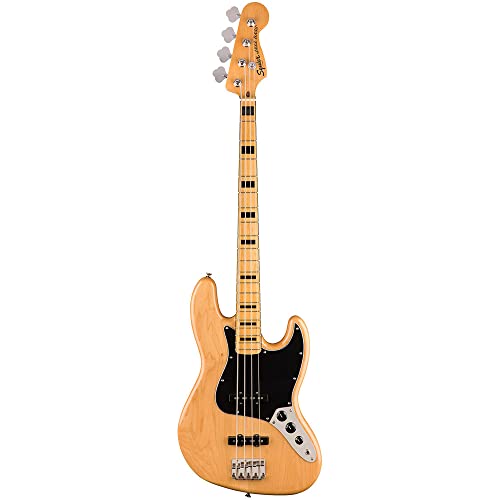
The Fender Jazz Bass has been a trusted favorite amongst musicians for decades. And this 1970s-era inspired model is no exception. Every aspect of this bass guitar has been meticulously designed by Fender, ensuring the highest quality and performance.
The body of the Jazz Bass features a classic design, with a sleek finish and nickel-plated hardware. The vintage-tinted gloss neck adds a touch of nostalgia to this timeless instrument.
One of the most impressive features of this Jazz Bass is its Fender-designed alnico pickups. These pickups deliver a rich and powerful sound, with a clarity that is unmatched by other bass guitars.
Whether you're a seasoned pro or just starting out, this right-handed bass guitar is perfect for players of all skill levels. With its comfortable design and impeccable sound quality, you'll be able to play for hours on end without any discomfort.
3. Fender Vintera 60s Jazzmaster
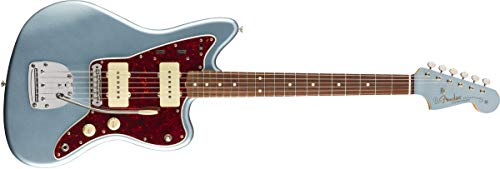
The guitar that every jazz enthusiast dreams of is here! This guitar boasts of two ‘60s jazz master single-coil pickups that will give you the ultimate jazz experience. The pickups are designed to capture the classic sound of the era and will provide you with a warm and smooth tone that is perfect for jazz.
The Mid ’60s C-shaped Maple neck with painted headstock is not only visually appealing but also provides a comfortable grip. The 7.25”-radius fingerboard with 21 vintage-style frets allows for easy playability and adds to the guitar's vintage charm. The Alder body is lightweight and resonant, which enhances the guitar's overall tone.
The Jazz master floating tremolo and Bridge are designed to deliver controlled vibrato and add to the guitar's versatility. You can create a variety of sounds with this guitar, from smooth and mellow to rich and dynamic.
This beautiful guitar also comes with a deluxe gig bag that makes it easy to transport and store. You can rest assured that your guitar will be protected from scratches and other damages while you're on the move.
4. Grote Full Scale Electric Guitar Semi-Hollow Body Guitar Bone Nut (Red)
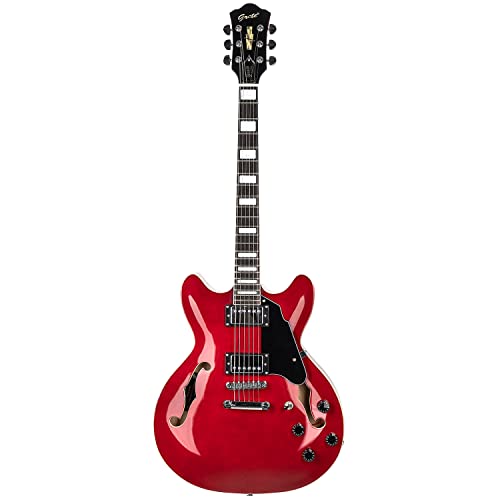
Introducing the Trademark & Metal Truss Rod Cover Guitar, an exceptional instrument that is built to impress. This guitar boasts of a full-size body that measures 24.75 inches in full scale size, complete with a black wood fingerboard, a Canadian maple neck and body, and volume/tone controls. It also comes with humbuckers pickups, knobs, and more to give you a complete playing experience.
One of the standout features of this guitar is the laser anti-false trademark and metal truss rod cover with engraved logo, which adds to its overall aesthetic appeal. With 22 frets and a nut width of 42mm, the guitar is designed to offer an easy and comfortable playing experience to both novice and professional guitar players alike. The inlays on the fingerboard add a touch of elegance to the guitar, making it a joy to play.
The Trademark & Metal Truss Rod Cover Guitar is crafted with high-quality materials and attention to detail, ensuring that it provides a good value for anyone looking for a strat type guitar. The finish is top-notch, while the fret board is smooth and easy to play on. This guitar is built to last and withstand the test of time, thanks to its sturdy construction.
To make transportation easy and reduce the possibility of guitar damage, the guitar strings are adjusted more loosely. However, stretching the strings is all that is needed to keep the guitar in tune. The included tuner is a nice touch and works perfectly, turning on automatically when clipped to the headstock of the guitar and turning off when removed. The strap is comfortable, and the guitar also comes with an extra set of strings and picks.
After tuning up the guitar, the neck feels great, and the sound is warm with good presence. The Trademark & Metal Truss Rod Cover Guitar holds tune exceptionally well and will provide hours of playing pleasure. Whether you're a beginner or a seasoned player, this guitar is a great investment that you won't regret.
5. Flaming Jazz Semi-Hollow Electric Guitar.
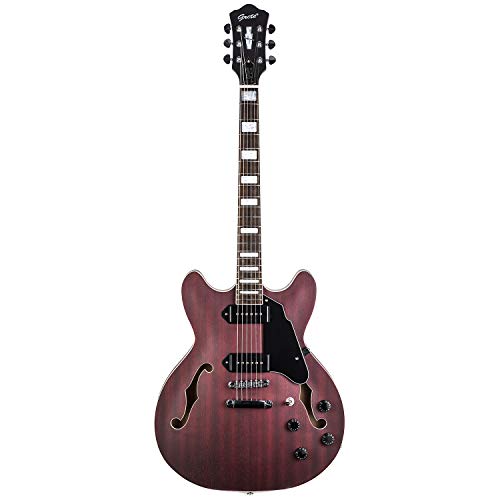
The Grote brand 335 semi-hollow electric guitar is a must-have instrument for any musician seeking a high-quality, versatile guitar. Boasting a lightweight and comfortable sapele wood body, this guitar is perfect for extended playing sessions while maintaining stability. The rosewood fingerboard offers exceptional sound and feel for players, enhancing the overall playing experience.
One of the standout features of this guitar is its P90 pickups. These pickups deliver warm, bright, and dynamic tone, making it suitable for a wide range of music styles. From blues to rock to jazz, the Grote brand 335 semi-hollow electric guitar can handle it all with ease.
The guitar's matte finish body is another noteworthy feature. This finish offers a smooth and comfortable playing experience, while the non-reflective finish is ideal for minimizing stage glare. This ensures that the guitar remains visible to the audience without any distracting reflections or glares.
Whether you're a beginner or an experienced player, the Grote brand 335 semi-hollow electric guitar is a high-quality instrument that offers a classic design and versatile performance capabilities. With its exceptional sound and playability, this guitar is sure to deliver an unforgettable playing experience every time. Don't miss out on the opportunity to take your music to the next level with this amazing instrument.
Best Electric Guitar For Blues And Jazz FAQs
Are there any particular colors or finishes that are popular among blues and jazz guitarists?
When it comes to blues and jazz guitarists, there are a few colors and finishes that tend to be more popular than others. One of the most classic and timeless choices is a sunburst finish, which features a blend of dark and light shades that create a striking and eye-catching look. Other popular finishes include solid black, natural wood, and cherry red. As for colors, blues and jazz guitarists often opt for darker, more muted hues like navy blue, deep purple, or forest green. These colors tend to give off a more sophisticated and mature vibe, which is in line with the style and tone of the music. However, it's important to note that ultimately, the choice of color and finish comes down to personal preference and style. Some musicians may prefer brighter or more unique finishes, while others may stick to the classics.
How important is the neck shape and fretboard material in selecting a blues and jazz guitar?
When it comes to selecting a blues and jazz guitar, the neck shape and fretboard material are both important factors to consider. The neck shape can greatly affect the playability and feel of the guitar. For blues and jazz, a comfortable and slim neck shape is often preferred as it allows for easier finger movement and faster playing. However, it ultimately comes down to personal preference and what feels most comfortable for the individual player.
In terms of fretboard material, some guitarists prefer a rosewood fretboard for its warm and mellow tone, while others prefer a maple fretboard for its brighter and more articulate sound. Again, it ultimately depends on personal preference and the specific sound the player is looking to achieve.
Overall, while the neck shape and fretboard material are important factors to consider, they should not be the sole determining factors in selecting a blues and jazz guitar. It is important to also consider the pickups, body shape, and overall sound of the guitar in order to find the perfect fit for your playing style and sound preferences.
Is it better to go for a hollow body or solid body guitar for playing blues and jazz?
When it comes to playing blues and jazz, both hollow body and solid body guitars can work well depending on your personal preferences and playing style.
Hollow body guitars are known for their warm, resonant tones and are often preferred by jazz guitarists for their ability to produce a rich, full sound. They also tend to have a bit more sustain and a slightly "looser" feel, which can be beneficial when playing long, flowing lines.
On the other hand, solid body guitars are generally more versatile and can handle a wider range of playing styles and genres. They often have a brighter, more focused tone that can work well for blues and jazz when paired with the right amp and effects.
Ultimately, the choice between a hollow body or solid body guitar comes down to personal preference and the specific sound you're looking to achieve. If you prioritize warmth, resonance, and a classic jazz sound, a hollow body guitar may be the way to go. If you prefer versatility and a brighter, more focused tone, a solid body guitar may be a better fit.
Should I opt for a guitar with a tremolo system or fixed bridge for playing blues and jazz?
When it comes to playing blues and jazz on a guitar, the choice between a tremolo system and a fixed bridge can be a matter of personal preference. Let's explore the pros and cons of each option.
A tremolo system, also known as a whammy bar or vibrato, allows you to vary the pitch of your notes by manipulating the bar. This can add a lot of expression to your playing, particularly when playing lead or solo parts. However, it can also cause your tuning to go out of whack if you're not careful, and it can be difficult to keep your guitar in tune when using a tremolo system extensively.
On the other hand, a fixed bridge is simpler and more stable, meaning it's less likely to cause tuning issues. It can also provide a more focused and articulate tone, which can be desirable when playing blues and jazz. However, without the option to vary the pitch of your notes, you may find your playing feeling more limited or less expressive.
Ultimately, the choice between a tremolo system and a fixed bridge comes down to what you value most in your playing. Some blues and jazz guitarists swear by the vibrato, while others prefer the simplicity and stability of a fixed bridge. It's worth trying both options out to see which one feels best for you.
What are some recommended string gauges for playing blues and jazz on an electric guitar?
When it comes to playing blues and jazz on an electric guitar, there is no one-size-fits-all answer to what string gauges to use. However, there are some general guidelines that guitarists tend to follow.
For blues, many guitarists prefer heavier gauges, such as 11s or even 12s. The heavier strings provide a fuller sound and better sustain, which is important for playing bluesy bends and vibrato. Additionally, heavier strings tend to have a tighter feel, which can help with playing percussive rhythms.
In contrast, jazz guitarists often prefer lighter gauges, such as 9s or 10s. These strings have a more delicate feel, which is well-suited to the intricate chord progressions and melodic lines that are characteristic of jazz. Lighter strings also tend to be easier to play quickly, which is important for jazz improvisation.
Ultimately, the choice of string gauge depends on personal preference and playing style. It's important to experiment with different gauges to find the ones that work best for you.
What are the key features to look for in an electric guitar for playing blues and jazz music?
When choosing an electric guitar for playing blues and jazz music, there are several key features to consider.
Firstly, the guitar should have a warm, resonant tone, with a full-bodied sound that can handle the intricate chord progressions and melodic lines of blues and jazz. This often means choosing a guitar with a hollow or semi-hollow body, which will provide greater resonance and sustain.
Secondly, the guitar should have a comfortable, easy-to-play neck. This means looking for a guitar with a smooth, fast neck profile, with low action and well-set-up frets. This will ensure that you can play with speed, accuracy, and fluidity, without any discomfort or strain.
Thirdly, it's important to consider the pickups on the guitar. For blues and jazz, you'll want a guitar with warm, vintage-style pickups that can capture the nuances and subtleties of your playing. Look for humbuckers or P-90s, which will provide a rich, full-bodied tone with plenty of sustain and clarity.
Finally, you'll want to consider the overall build quality and craftsmanship of the guitar. Look for a guitar made from high-quality materials, with solid construction and attention to detail. This will ensure that your guitar stays in top condition for years to come, and that it provides a reliable, consistent performance every time you play.
What is the ideal scale length for a blues and jazz guitar?
The ideal scale length for a blues and jazz guitar is a matter of personal preference for the player. However, the typical scale length for most blues and jazz guitars is between 24.75 inches and 25.5 inches. This range of scale lengths provides a balance between playability and tone. Shorter scale lengths, such as those found on Gibson guitars, tend to have a warmer tone and are easier to play bendy blues notes. Longer scale lengths, like those found on Fender guitars, provide more string tension and clarity, making them suitable for jazz and complex chord work. Ultimately, the ideal scale length for a blues or jazz guitar will depend on the player's individual playing style and preferences. It's recommended that guitarists try out different scale lengths to find what works best for them.
What is the price range for a good quality electric guitar for blues and jazz?
The price range for a good quality electric guitar for blues and jazz can vary depending on the brand, model, and features. Generally, a decent quality electric guitar for these genres can range from $500 to $2000. However, there are also high-end models that can cost more than $5000. It's important to note that price isn't always an indicator of quality, and a more expensive guitar doesn't necessarily mean it's the best fit for you. It's crucial to consider factors such as the type of wood used, the pickups, and the overall feel and sound of the guitar when making a purchase. Additionally, it's recommended to try out different guitars before making a decision and to consult with a knowledgeable salesperson or guitar instructor for guidance.
What type of pickups should I choose for a blues and jazz guitar?
When it comes to choosing pickups for a blues and jazz guitar, there are a few things to consider. First, you'll want pickups that can produce warm, clear tones with good sustain. Single-coil pickups are often a good choice for blues and jazz, as they can provide a bright, articulate sound that cuts through the mix. However, some players prefer the fuller, rounder sound of humbucker pickups.
Another consideration is the output of the pickups. Blues and jazz guitarists typically don't need high-output pickups, as they generally play at lower volumes and rely more on subtlety and dynamics. So, pickups with moderate or low output may be a better choice.
Ultimately, the best pickups for a blues and jazz guitar will depend on your personal preferences and playing style. It's a good idea to try out different pickups and see which ones sound and feel best to you. Some popular pickups for blues and jazz include the Seymour Duncan Jazz, DiMarzio PAF, and Fender Custom Shop '54 Strat pickups.
Which guitar brands are known for producing high-quality instruments for blues and jazz players?
When it comes to producing high-quality instruments for blues and jazz players, there are several guitar brands that are well-known for their craftsmanship and attention to detail. One of the most respected and sought-after brands is Gibson. They have a long history of producing iconic guitars such as the Les Paul and the ES-335, which have been used by blues and jazz legends like B.B. King and Wes Montgomery. Another brand that is highly regarded in the blues and jazz community is Fender. Their Stratocaster and Telecaster models have been used by blues players like Buddy Guy and Jimi Hendrix, while their Jazzmaster and Jaguar models have been popular with jazz players. Other notable brands that are known for producing high-quality guitars for blues and jazz include Gretsch, Ibanez, and PRS. Ultimately, the best guitar brand for blues and jazz players will depend on individual preferences and playing styles.


